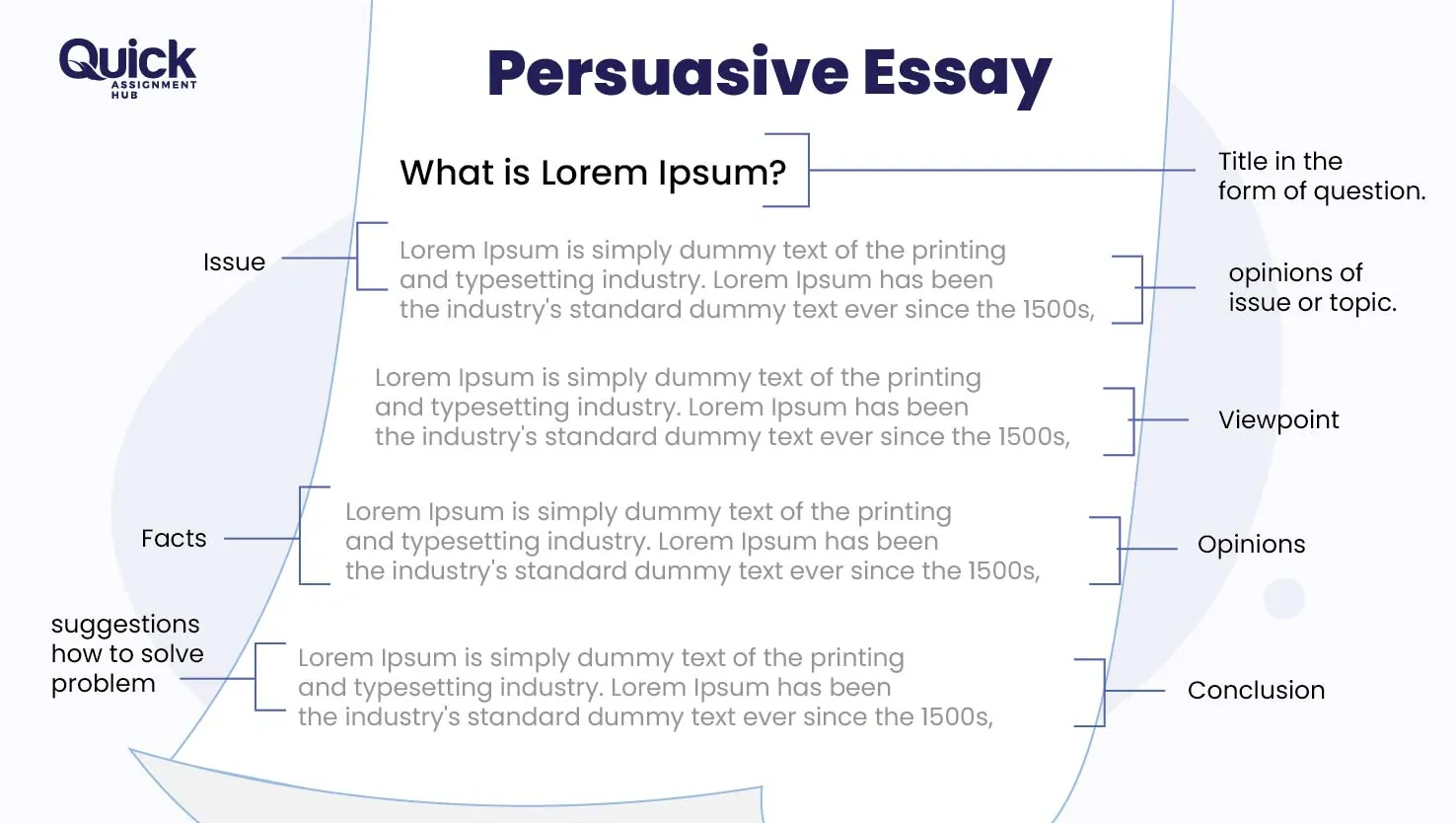
Do you remember how it feels to persuade your friends to watch your favourite movie, only to succeed in convincing them with your good points and enthusiasm? Well then, you have already got the essence of persuasion. Writing a persuasive essay is no different; it is about you trying to persuade your professor to agree with a specific side of the argument you have presented through valid evidence and powerful wording skills.
Whether in college you are preparing for your writing assignment, or in university, as you anticipate starting some advanced course, knowing how to develop a persuasive essay will be a skill that will work for you in later life and in various disciplines. This guide will take you through it step by step, starting with how to write a persuasive essay, selecting a topic, creating an outline, outlining your essay, and editing it like a professional.
Persuasive essay writing is much more than classroom writing. It develops your critical thinking ability, enables you to express yourself neatly and teaches you to support your views with facts. These skills will help you in debates, presentations, job interviews, or real life. Given below are the reasons why it is necessary to learn how to write a persuasive essay:
Boost Critical Thinking: You learn to evaluate arguments, identify the bias of the topic, and construct logical statements.
Enhances Communication Skills: You train how to communicate constructively and convincingly.
Improves Academic Grades: Persuasive writing is used in examinations, assignments and dissertations.
Real World Application: Persuasion is a life skill you can use to write a proposal and make a business pitch.Persuasion is a life skill you can use to write a proposal and make a business pitch.

Now we will divide the process of how to write a persuasive essay into easy and doable steps to make the essay compelling.
You need to define the purpose of your essay before you begin to write it. Are you aiming to convince your professor to believe in a particular point of view, to follow a specific line of thought, or to make them do something?
Another thing to consider is the audience, i.e. your professors. Do they think they will go along with you, or do you have more persuasion to do? It is essential to know their opinion to select the appropriate tone and evidence.
Your essay will be strong if your topic is strong. A weak or too broad topic can cause difficulty developing persuasive arguments. Choose something that is:
Controversial: The issue should not be one-sided. There should at least be two sides of the argument.
Interesting: You should choose a subject that you are very passionate about; your interest will translate to your writing.
Relevant: Consider up-to-date issues or topics that interest your professors.
Here are some of the convincing, persuasive essay topics:
Are social media networks more right to control fake news?
Will free college education be a possibility?
Are smartphones turning us smarter or dumber?
Is a ban on animal testing justified in the world?
Any persuasive essay relies on facts and logic. Gather reliable research materials from scholarly and research papers, books or reliable internet sites. The more evidence you have, the more it becomes difficult for your professor to disagree.
Jumping directly into writing without thinking of an outline is the same as attempting to construct a house without a blueprint. A properly drawn outline will provide a proper direction to your essay and help you structure your arguments better.
Given below is how to write a persuasive essay outline:
Introduction
Hook: Be ready with a statement or question that is interesting to the reader.
Background information: Concisely explain the problem.
Thesis Statement: Be clear in what you are saying.
Body Paragraphs (Usually 3-4)
Point 1: BEST argument providing evidence.
Point 2: Another supporting argument.
Point 3: Address counterarguments and disprove them.
Conclusion
Restate your thesis.
Summarise key points.
Finish with a suggestion or a thought-provoking CTA.
Knowing how to write a persuasive essay outline saves time and ensures your essay flows thoroughly and compellingly.
Once you have completed writing your persuasive essay per the given outline, you must thoroughly proofread the essay to ensure that all the evidence is correctly stated and look for grammar and spelling errors. Ensure to check the citation.
The persuasive essay structure is the backbone of your persuasive essay. Using a conventional format also helps to make your essay concise, logical and ultimately enjoyable. It is pleasant in detail:
Begin with a hook, a statistic, a question or a bold statement that is attention-seeking. Give a brief background information and conclude your introduction with a good thesis statement that clearly shows your position.
Persuasive Essay Examples:
Millions of animals are tortured in laboratories every year around the globe. We must ask ourselves: Is scientific progress worth this cruelty?
Every paragraph must be devoted to one point that can support your thesis. Appeal to facts, anecdotes, opinions of experts and even emotional appeal to help your case. For example, when writing an essay law sample, you can refer to or quote actual law cases or statutes to prove your point.
Begin with a clear topic sentence.
Provide detailed explanations and supporting evidence.
Finish off with a sentence that supports what you are saying.
Counter Arguments: To Strengthen Your Argument
Address counterarguments and disprove them rationally. This demonstrates that you have considered various viewpoints and strengthens your argument's credibility.
Some say that using animals in tests is required to make medical advances. Nevertheless, cruelty-free research is possible and more precise due to modern alternatives, such as organ-on-a-chip technology.
Conclusion: Seal The Argument
Restate what you have already stated in your thesis, summarise your best points to date and present your reader with a thought that will endure. End with a CTA wherever required. Try to leave the professor with something to think about.
A solid structure with a great topic must be polished to persuade. The following are some tips on how to write a persuasive essay:
Use A Strong Opening Line: Grab the attention of your professors with the beginning lines.
Stick To Strong Language: Strong language, such as 'must', 'should', 'undoubtedly', etc., adds strength.
Support All Your Arguments With Evidence: Uses of statistics, expert quotes, and examples make your arguments authoritative.
Include Transitions: Statements such as 'further on', 'on the other hand' and 'as a result' help enhance the flow.
Refine And Edit: A properly edited essay is easily read and sounds more authoritative.
Show Empathy: Understand the other side's viewpoint and counter it with empathy.
Your First Order
Get 20% OFF!
It takes practice and time to master how to write a persuasive essay, but when you do, it will be a potent tool that will increase your academic and real-life communication skills. Keep in mind- it is not simply about making your point out there that you are correct, but showing your reader the reasoning and worth of your idea.
If you struggle to write a persuasive essay independently, especially when creating a persuasive essay outline or choosing the correct topic. Quick Assignment Hub's essay writing help is here to assist you. Our team will help you in every step, from brainstorming topics to editing, which saves your time and makes your essay memorable.